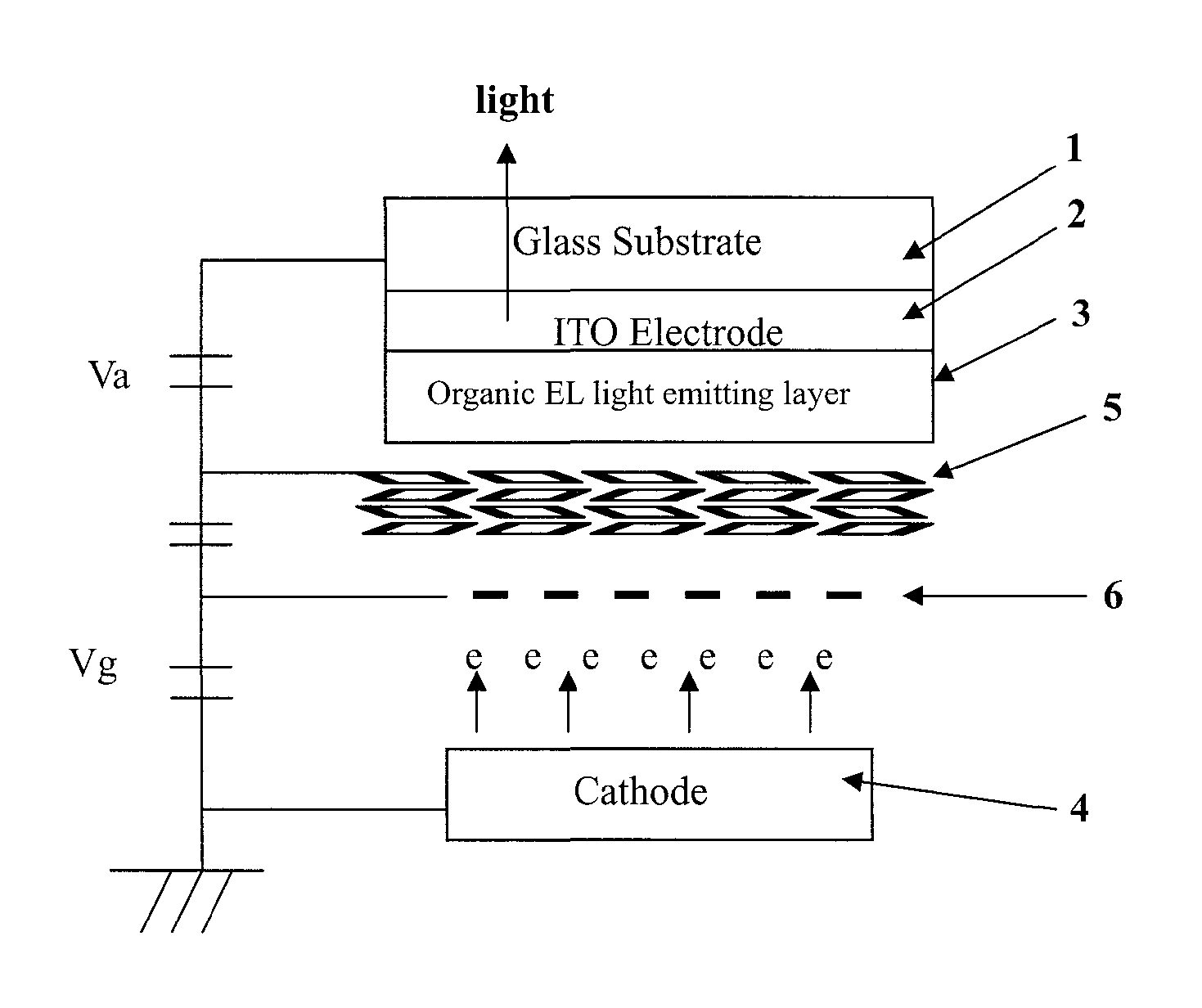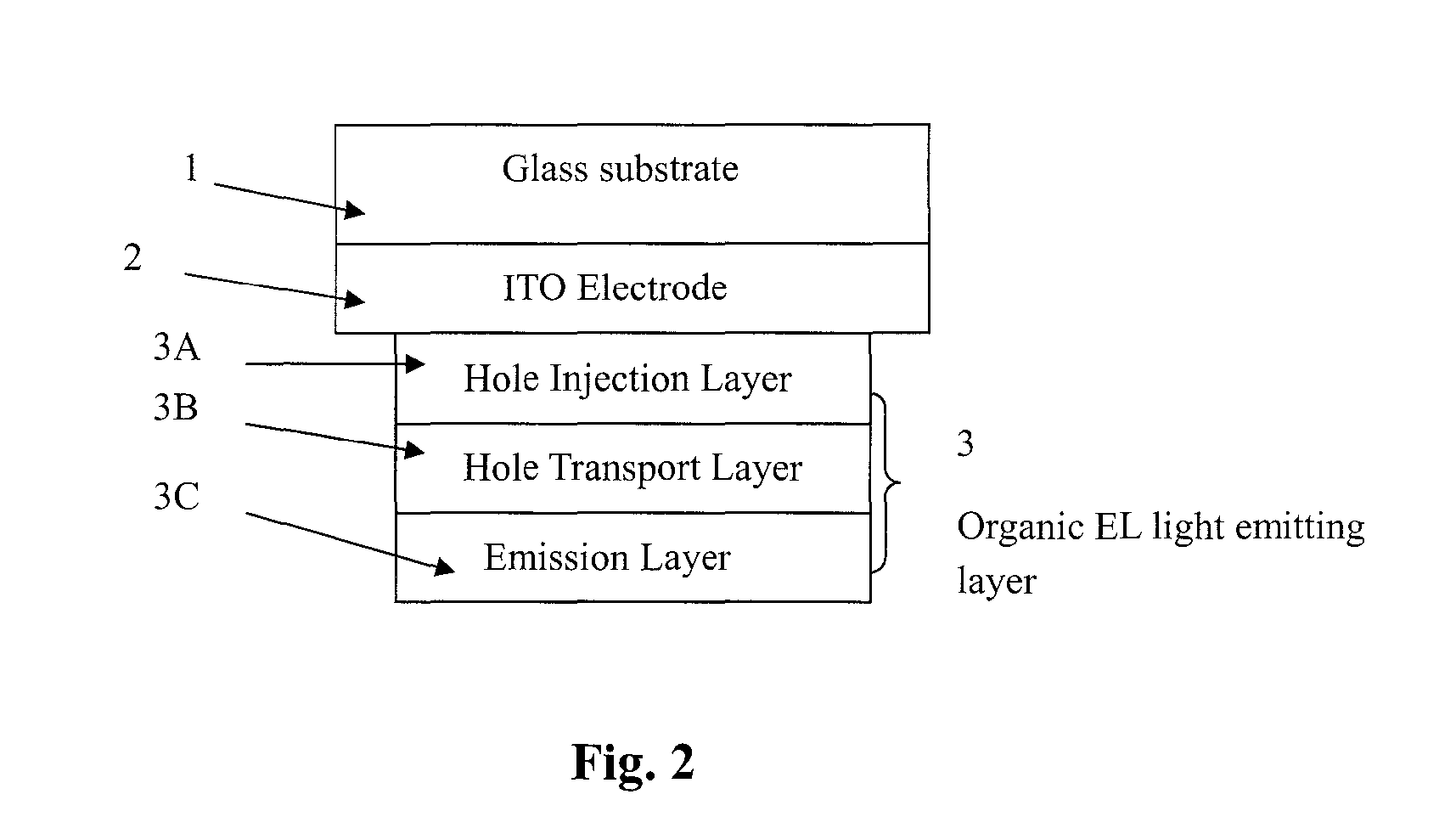Field emission organic light emitting diode
a field emission and organic light technology, applied in the direction of discharge tube luminescnet screen, discharge tube/lamp details, cathode ray tube/electron beam tube, etc., can solve the problem of not meeting the requirement for high efficiency flat panel display, and achieve the effect of high luminescent efficiency
- Summary
- Abstract
- Description
- Claims
- Application Information
AI Technical Summary
Benefits of technology
Problems solved by technology
Method used
Image
Examples
fourth embodiment
[0034]FIG. 9 shows the FEOLED device of the present invention. The multi-layer structure of the organic EL light emitting layer 3 has the same structure as that of FIG. 2 except for the metal back 10. The metal back 10 is attached to the secondary electron material coating on the emission layer 3C for adjusting EL intensity. The light color of the organic EL light emitting layer 3 described above can be changed by changing its material and structure.
[0035]As the electron source, the cathode 4 can be made of low work function metal such as tungsten, or implemented with a cold electron source cathode of the CNT, Spindt, PN, MIM, or surface emission types.
[0036]Refer to FIG. 1, the dynode 5 can be of the metal channel, box, line focus, mesh, or MPC types as shown in FIGS. 10-14.
[0037]The secondary electron material in the dynode 5 can be Cu—Be or Ag—Mg alloys. The secondary electron material coating on the organic EL light emitting layer 3 can be metal oxide of Be, Mg, or Ca.
[0038]This...
third embodiment
[0051]FIG. 8 shows the FEOLED device of the present invention in which the dynode is omitted. In such case, the secondary electron material, which can be made of oxides of Be, Mg, or Ca, is coated directly on the organic EL light emitting layer 3.
[0052]Refer to FIG. 9, in designs in which the dynode 5 is absent, a metal back 10 can be grown on the organic EL light emitting layer 3. This metal back 10 interfaces the organic EL light emitting layer 3 to the cathode 4, as well as prevents damages caused when electrons are injected to the organic EL light emitting layer 3. The metal back 10 can be made of Cu—Be, Ag—Mg, or Au—Ca alloys. In such configuration, a bias voltage VELth (Vth=threshold voltage for electroluminescence) is first applied between the ITO anode electrode 2 and the metal back 10. Subsequently, the aforementioned secondary electron materials, such as oxides of Be, Mg, or Ca, can be grown between the organic EL light emitting layer 3 and the metal back 10. The combined ...
PUM
 Login to View More
Login to View More Abstract
Description
Claims
Application Information
 Login to View More
Login to View More - R&D
- Intellectual Property
- Life Sciences
- Materials
- Tech Scout
- Unparalleled Data Quality
- Higher Quality Content
- 60% Fewer Hallucinations
Browse by: Latest US Patents, China's latest patents, Technical Efficacy Thesaurus, Application Domain, Technology Topic, Popular Technical Reports.
© 2025 PatSnap. All rights reserved.Legal|Privacy policy|Modern Slavery Act Transparency Statement|Sitemap|About US| Contact US: help@patsnap.com



